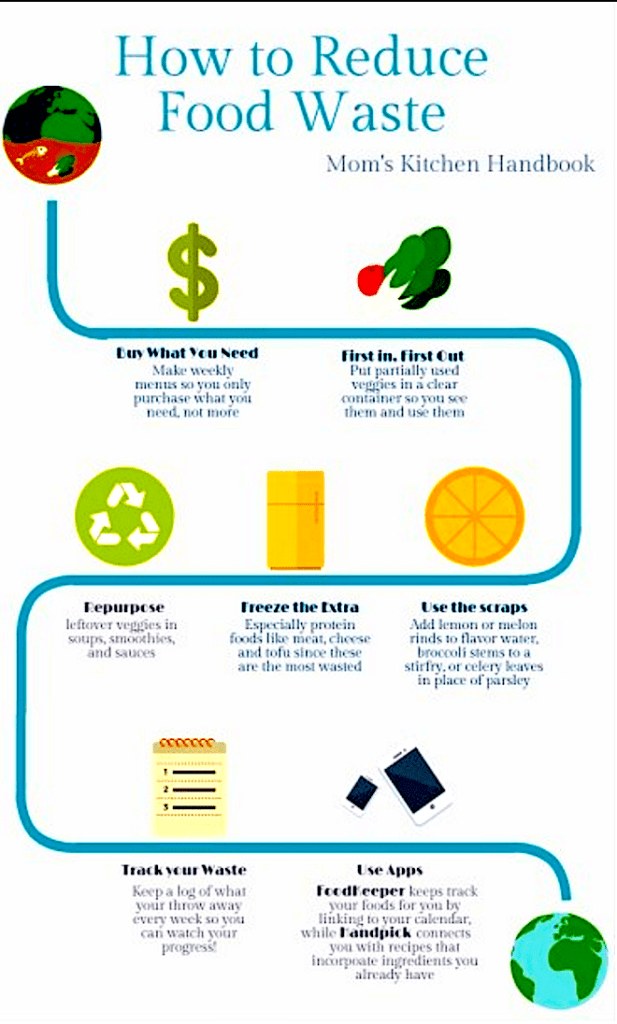It’s Part Two of A Year of Less Food Waste. Last week I wrote about the profound impact of food waste on our environment, thanks to the 36 pounds that gets tossed per person each month. This week I bring it home and show you how to begin thinking about reducing waste in your very own kitchen.
The “thinking ” part of the equation is everything here, since the first step in making a change is awareness. Just being conscious of what you routinely put in the garbage may begin to shift your habits. To get you started, I’ve mapped out a series of steps to minimize waste. If you have any tips of your own to offer, I’d love to hear them in the comments section below.
10 Steps to Reduce Food Waste
- Shop in Your Own Fridge First — Before you head to the market, know what you have, so you don’t double up on unneeded groceries.
- Plan Meals— It helps to have a plan in hand when it comes to minimizing waste. Before you plot out your meals for the week, consider what you already have so you can work those foods into your game plan.
- Build an “Eat the Leftovers” Night into your weekly routine. The app Handpick might be useful for this: You plug in foods you have on hand; the app offers suitable recipes using those ingredients. Brilliant.
- Rotate what’s in your fridge, so more perishable foods with more current expiration dates are closer to the front.
- Invest is clear containers to store leftovers, so you can see what you have. Out of sight is often out of mind, which means food hidden away gets neglected until it’s too late. Keeping some semblance of order to your pantry, fridge, and freezer can help you keep tabs on what you have.
- Make robust use of your freezer. The list of clever ways to use your freezer is endless. Leftovers such as soups, stews, “saucy” casseroles (ie enchiladas), do well in the freezer. When wrapped well, breads, other baked goods, sliced fruit, firm cheeses, along with meat and poultry can all be frozen successfully.
- Label foods that go into the freezer. It’s too easy to forget a month from now what exactly it is you popped into that freezer bag.
- Pause before you mindlessly toss something. Consider if there is a way it might come in handy that you hadn’t thought of before.
-
That half cup of quinoa could go into lunch the next day.
-
That Parmesan rind could season a pot of minestrone.
-
That apple with two bites out of it could be grated into a pot of oatmeal.
-
- Track your waste. Take this process to a different level of commitment by keeping tabs on what lands in the trash. It can be really satisfying to see your progress and how that translates into savings.
- Lastly, if you know you aren’t going to get to untouched, unopened food before it expires, compost it or donate it to a local food bank.
Check out this recipe for no waste “Kitchen Sink” Minestrone along with more handy tips on managing leftovers.
Much gratitude to dietetic intern Grace Voorheis for her work on this series and for developing the food waste infographic featured above.
